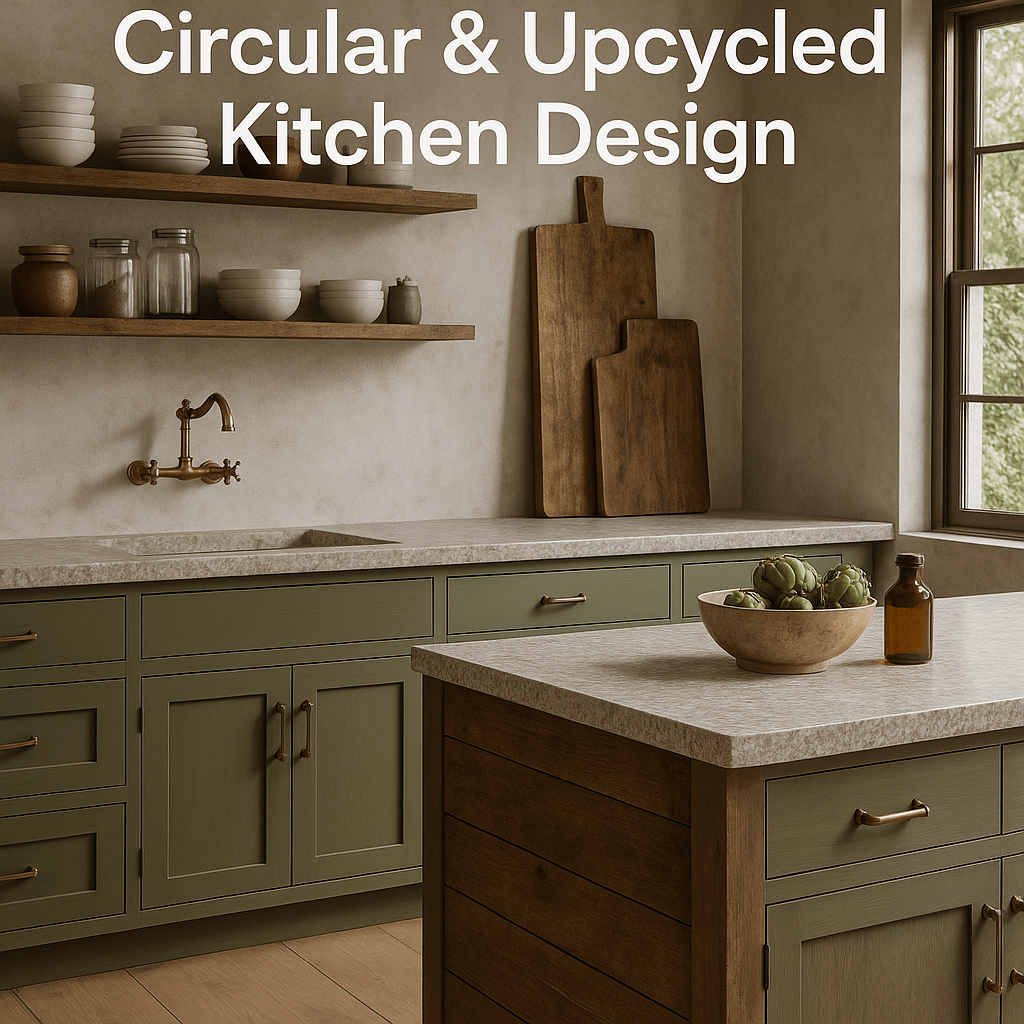
Circular & Upcycled Kitchen Design
Share
Today’s most forward-thinking kitchens are designed not just for function and beauty, but with circular economy principles in mind. By embracing upcycling, sustainable materials, and long-lasting craftsmanship, you can create a kitchen that reduces waste, celebrates character, and minimises its environmental footprint.
What Is a Circular Kitchen?
A circular kitchen focuses on reuse, repair, and longevity. It’s about making smarter material choices, opting for local craftsmanship, and incorporating components that have been salvaged, restored, or repurposed. Every design decision contributes to a loop — rather than a landfill.
Ways to Introduce Circular Design
- Reclaimed Timber: Use salvaged wood for shelving, open units, or drawer fronts. The patina of age adds instant warmth and individuality.
- Recycled Worktops: Options like recycled glass, crushed porcelain, or composite paper surfaces are visually striking and eco-conscious. See our guide to worktop options.
- Vintage Hardware: Mix old and new by incorporating second-hand handles, hinges, or taps into new cabinetry.
- Design for Disassembly: Choose cabinet systems that can be repaired, reconfigured or upgraded over time, rather than replaced entirely.
Why It Matters
The kitchen is one of the most resource-intensive areas of the home. Designing with circularity in mind reduces pressure on landfills, lowers carbon emissions, and often results in a kitchen with more soul and story. Plus, it aligns beautifully with our own commitment to long-lasting handmade quality and reforestation through tree planting.
Upcycled Meets Bespoke
At Painted Kitchen, many clients choose a hybrid approach — combining bespoke handmade cabinetry with upcycled accessories or repurposed surfaces. If you're drawn to both sustainability and luxury, these elements work hand-in-hand to deliver authenticity and impact.
Conclusion
Upcycled kitchens are more than a trend — they’re a statement. A statement that design, quality, and environmental responsibility can coexist. With reclaimed materials, bespoke joinery, and conscious choices, your kitchen can be a truly sustainable centrepiece for years to come.
Frequently Asked Questions
What is the difference between a circular kitchen and a sustainable kitchen?
Sustainable kitchens minimise impact through efficient materials and practices. Circular kitchens go further, focusing on keeping materials in use through reuse, repair, and recycling, aligning with circular economy principles.
Are upcycled kitchens more affordable?
They can be — especially when incorporating salvaged hardware or materials. However, sourcing and preparing reclaimed components can also add labour. The value comes from character, quality, and eco-benefits.
How do I know if materials are safe to reuse?
Work with experienced suppliers who vet reclaimed wood and hardware for stability, safety, and suitability. Avoid upcycling materials that contain lead paint or unknown finishes.
